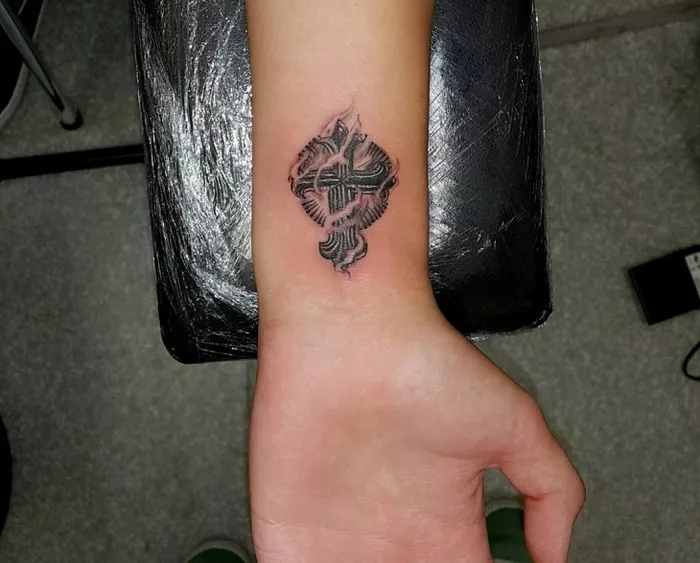Celtic tattoos are an enigmatic art form that has captivated people worldwide for centuries. These intricate designs, characterized by their knotwork, spirals, and interlacing patterns, hold profound cultural and historical significance. To truly appreciate the beauty and symbolism behind Celtic tattoos, it is essential to delve into their origins, tracing their roots back to the ancient Celtic civilizations of Europe.
Ancient Celtic Culture: A Tapestry of Tradition and Symbolism
The Celts were a diverse group of tribes inhabiting much of Europe around 500 BCE. Their culture was rich in mythology, art, and spirituality, which is reflected in their intricate artwork, including the designs found in Celtic tattoos.
One of the most significant aspects of Celtic culture was their reverence for nature and the elements. This reverence is evident in many Celtic tattoo designs, which often incorporate images of animals, trees, and other elements of the natural world. Animals such as the stag, wolf, and bear held particular importance in Celtic mythology, symbolizing strength, courage, and wisdom.
The Evolution of Celtic Art: From Ancient Symbols to Modern Tattoos
Celtic artwork flourished during the Iron Age, reaching its peak between 600 BCE and 400 CE. During this time, Celtic artisans created intricate metalwork, pottery, and stone carvings adorned with the distinctive knotwork and spirals that would later become synonymous with Celtic tattoos.
The arrival of Christianity in the Celtic lands during the early Middle Ages brought significant changes to Celtic art. Many of the ancient pagan symbols were adapted and incorporated into Christian artwork, leading to the creation of unique hybrid designs. These Christianized Celtic symbols, known as Insular art, continued to influence the development of Celtic tattoo designs throughout the Middle Ages and into the modern era.
The Revival of Celtic Tattoos: From Traditional Art to Modern Expression
While Celtic art experienced a decline following the spread of Christianity and the decline of Celtic civilization, it saw a resurgence during the Celtic Revival of the 19th and 20th centuries. This revival, fueled by a renewed interest in Celtic culture and identity, breathed new life into traditional Celtic art forms, including tattoos.
The late 19th century saw a surge in interest in Celtic symbolism and mythology, thanks in part to the work of scholars and artists who sought to preserve and celebrate Celtic heritage. This renewed interest in Celtic culture sparked a resurgence in traditional Celtic tattoo designs, with people of Celtic descent and others drawn to the intricate beauty and deep symbolism of these ancient symbols.
The Cultural Significance of Celtic Tattoos
Celtic tattoos hold deep cultural and spiritual significance for those who wear them. Each design is imbued with layers of meaning, reflecting elements of Celtic mythology, spirituality, and the natural world.
One of the most iconic Celtic tattoo designs is the Celtic knot, a symbol of eternity and the interconnectedness of all things. The endless loops and interwoven patterns of Celtic knots represent the eternal cycle of life, death, and rebirth, as well as the interconnectedness of the physical and spiritual realms.
Another common motif in Celtic tattoos is the Tree of Life, a symbol of growth, renewal, and the interconnectedness of all living things. The branches of the tree reach skyward, while its roots delve deep into the earth, symbolizing the connection between the heavens, the earth, and the underworld.
Animals also feature prominently in Celtic tattoo designs, with each animal carrying its own symbolic meaning. The stag, for example, symbolizes strength, virility, and the pursuit of knowledge, while the wolf represents loyalty, intelligence, and cunning.
The Modern Appeal of Celtic Tattoos
In addition to their deep cultural and spiritual significance, Celtic tattoos continue to captivate people around the world with their timeless beauty and intricate designs. Whether worn as a symbol of cultural pride, spiritual connection, or personal expression, Celtic tattoos hold a special allure for people of all backgrounds.
Modern tattoo artists have embraced Celtic designs, incorporating them into their repertoire and putting their own unique spin on traditional motifs. From bold blackwork to vibrant colors, modern Celtic tattoos come in a wide range of styles, allowing individuals to express themselves in a way that feels authentic and personal.
Conclusion
In conclusion, Celtic tattoos are more than just decorative body art; they are a living legacy of an ancient and vibrant culture. From their origins in the ancient Celtic civilizations of Europe to their modern-day resurgence, Celtic tattoos continue to inspire awe and admiration with their timeless beauty and profound symbolism. Whether worn as a tribute to one’s Celtic heritage, a symbol of spiritual connection, or simply as a stunning work of art, Celtic tattoos serve as a testament to the enduring power of human creativity and expression.


